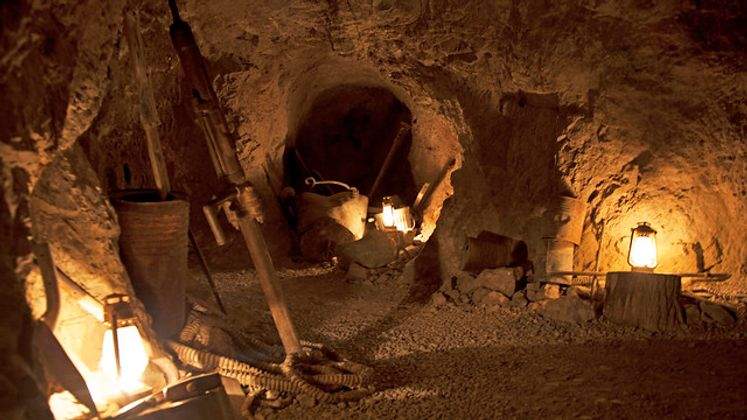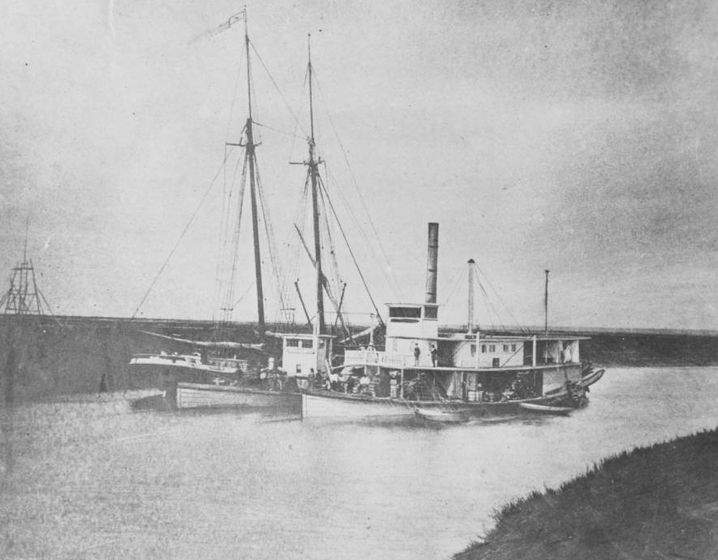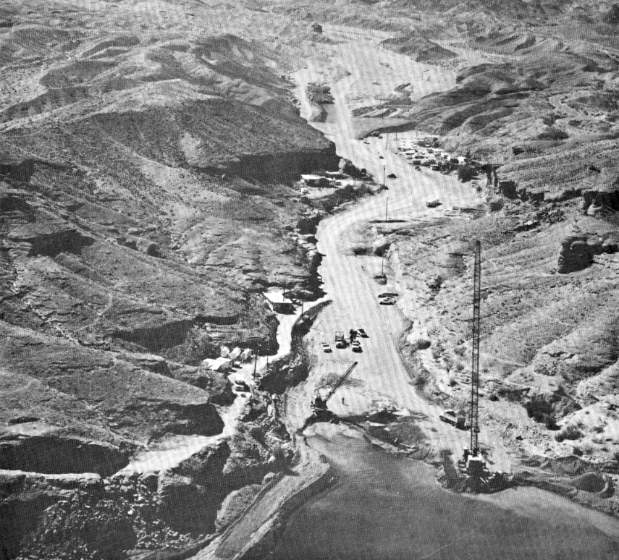
El Dorado Canyon

Photograph of Techatticup Mine, 1930s-1950s. Logan Collection. UNLV Libraries Special Collections & Archives.

"Techatticup Mine" by Sydney Martinez/TravelNevada is licensed under CC BY-NC-ND 2.0.

"Petroglyphs, Keyhole Canyon, Eldorado Mountains South of Boulder City, Nevada." by Ken Lund is licensed under CC BY-SA 2.0.

Photograph of a steamboat, Colorado River, circa 1880s. Elbert Edwards Photo Collection. UNLV Libraries Special Collections & Archives.

Aerial view of Eldorado Canyon looking upstream (west) on September 30, 1974.
"Toward the Colorado River from this point runs El Dorado Canyon where occurred one of the biggest mining booms in Nevada history. Gold and Silver mines were developed here about 1859 and soon rich mines were developed. In the 1860's the canyon was bursting with a rowdy population of nearly 500 men. Many of these said to be deserters from the Civil War.
The river was navigable at the time making it possible to bring in food and supplies by boat.
Notorious for its feuds and shootings, the canyon was equally well known for its three largest mines, the Techatticup, Wall Street and Savage which yielded five million dollars during 40 years of operations."
("Original" Nevada Historical Marker 6)
"Eldorado Canyon, the site of a mining boom, runs east from here to the Colorado River. Prospectors began digging for gold and silver here about 1859, forming the Colorado Mining District. The three largest mines, the Techatticup, Wall Street, and El Dorado Rand Group, yielded over $6,000,000.
This portion of the Colorado River was navigable before the construction of Hoover Dam, allowing steamboats and barges to freight goods 350 miles from the Gulf of California to the mouth of Eldorado Canyon and upriver. The steamboat era peaked in the 1860s but continued to the turn of the twentieth century.
In 1867, the US Army established an outpost at Eldorado Canyon to secure the riverboat freight and to protect miners in the canyon from Native Americans. The military abandoned the camp in 1869. In the 1870s the mines flourished again, producing ore until World War II."
(Nevada Historical Marker 6)
"The Techatticup Mine, located in 1861, was the most important mine in El Dorado Canyon. It produced millions of dollars in gold ore, and was originally served by steamboats on the Colorado River. The mine's name is taken from two Paiute words meaning "hungry" or "bread".
Two of Nevada's most famous renegade Indians lived in the canyon: Ahvote, who killed five victims, and Queho, who killed over twenty people. Near this spot, Queho killed his last victim, Maude Douglas, in 1919, and successfully eluded Sheriff's posses."
(Queho Posse Chapter 1919 E Clampus Vitus)
"In 1940, Charley Kenyon and Art Schroeder located a cave above the Colorado River, about twelve miles northeast of this spot. In it were the remains of southern Nevada's last great renegade, Queho, who had been dead about six months. Queho had grown up in Eldorado Canyon area, and was responsible for a string of murders between 1910 and 1919. After the last killings, he continued to live in the area for another 20 years. The bones were identified by physical characteristics, and artifacts found in the cave which were known to have come from various murder victims."
(Queho Posse Chapter 1919 E Clampus Vitus)
"On September 14, 1974, a flash flood roared down Eldorado Canyon and swept the Nelson's Landing marina, which was down below you, into Lake Mohave. Forty-one people escaped in time, but nine others drowned. The 22-foot-high-wave carried 38 vehicles, 23 boats, boat slips, trailers, cabins, a restaurant, and a store into the lake.
"The cloudburst didn't move over the canyon in a normal pattern," said Murl Emery, a boating guide, "it followed the line of the stream and moved right down the landing." The U.S. Geological Survey said 3.12 inches of rain fell in the canyon that day."
(National Park Service U.S. Department of the Interior Lake Mead National Recreation Area)